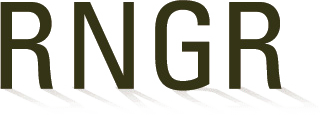
Agoseris (heterophylla)
|
Dave Skinner PMC Farm Manager USDA NRCS - Pullman Plant Materials Center Room 211A Hulbert Hall WSU Pullman, Washington 99164-6211 509-335-9689 509-335-2940 (fax) abbie@wsu.edu http://plant-materials.nrcs.usda.gov/wapmc |
|
| Family Scientific Name: | Asteraceae | ||
|---|---|---|---|
| Family Common Name: | Sunflower | ||
| Scientific Name: | Agoseris heterophylla (Nutt.) Greene | ||
| Common Name: | Annual agoseris | ||
| Species Code: | AGHE2 | ||
| Ecotype: | Paradise Creek drainage near Pullman, Washington. | ||
| General Distribution: | Dry open places in the western US east to Montana and south to New Mexico. | ||
| Propagation Goal: | plants | ||
| Propagation Method: | seed | ||
| ProductType: | Container (plug) | ||
| Stock Type: | 10 cu. in. | ||
| Time To Grow: | 0 | ||
| Target Specifications: | Tight root plug in container. | ||
| Propagule Collection: | Fruit is an achene which ripens beginning in June. It is collected when the pappus begins to expand. Seed is tan to greyish brown in color and wind disseminated, so must be collected before it blows away. Seed maturity is indeterminant and daily collections are needed to maximize volume. Seed is stored in paper bags or envelopes at room temperature until cleaned. | ||
| Propagule Processing: |
Small amounts are rubbed to free the seed, then cleaned with an air column separator. Larger amounts can probably be threshed with a hammermill, then cleaned with air screen equipment. Agoseris grandiflora has been effectively cleaned in that manner. Clean seed is stored in controlled conditions at 40 degrees Fahrenheit and 40% relative humidity. |
||
| Pre-Planting Treatments: | 30 days of cool, moist stratification is needed. Unpublished data from trials conducted at the Pullman Plant Materials Center revealed that 12% germination occurred without stratification. 30 days of cold, moist stratification resulted in 50% germination. 90 or more days of cold, moist stratification resulted in 40% germination. | ||
| Growing Area Preparation/ Annual Practices for Perennial Crops: |
In late November or early December seed is sown in 10 cu. in. Ray Leach Super cell conetainers filled with Sunshine #4 and covered lightly. A thin layer of pea gravel is applied to prevent seeds from floating. Conetainers are watered deeply and placed outside. Alternately, seed can be moist stratified in a refrigerator for 30 days before sowing in the greenhouse. | ||
| Establishment Phase: | Containers are moved to the greenhouse in early January. Germination usually begins in 3 days and is complete in 6 days. Unstratified seed may take longer to germinate and total germination will be lower. | ||
| Length of Establishment Phase: | 1 week | ||
| Active Growth Phase: |
Plants are watered deeply every other day and fertilized once per week with a complete, water soluble fertilizer containing micro-nutrients. Plants may require water every day during the final part of the active growth period. They may begin flowering while still in the greenhouse, but do not produce viable seed, suggesting that a pollinator is needed. A shorter period in the greenhouse might be sufficient for this species. |
||
| Length of Active Growth Phase: | 2-3 months | ||
| Hardening Phase: | Plants are moved to the cold frame in late March or early April, depending on weather conditions. They are watered every other day if the weather is cool, and every day during hot, dry spells. | ||
| Length of Hardening Phase: | 2-4 weeks | ||
| Other Comments: |
Agoseris heterophylla is an annual and may grow better from direct seeding in the fall. No insect or disease problems have been noted. |
||
| References: |
Hitchcock, C. Leo, and Arthur Cronquist. 1973. Flora of the Pacific Northwest. University of Washington Press. Seattle, WA. 730 pp. Jolley, Russ. 1988. Wildflowers of the Columbia Gorge. Oregon Historical Society Press. Portland, OR. 332pp. Larrison, Earl J., Grace W. Patrick, William H. Baker, and James A. Yaich. 1974. Washington Wildflowers. The Seattle Audubon Society. Seattle, WA. 376 pp. Piper, C.V., and R.K. Beattie. 1914. The Flora of Southeastern Washington and Adjacent Idaho. Lancaster, PA. Press of the New Era Printing Company. 296 p. Rickett, Harold W. 1973. Wildflowers of the United States: The Central Mountains and Plains. Vol. 6. (3 parts). McGraw Hill, New York. St. John, Harold. 1963. Flora of Southeastern Washington and of Adjacent Idaho. 3rd edition. Outdoor Pictures. Escondido, CA. 583 pp. USDA, NRCS. 2006. The PLANTS Database, Version 3.5 (http://plants.usda.gov). Data compiled from various sources by Mark W. Skinner. National Plant Data Center, Baton Rouge, LA 70874-4490 USA. Winegar, David. 1982. Desert Wildflowers: Drylands of North America. Beautiful America Publ. Co. Beaverton, OR. 144 pp. |
||
Citation:
Skinner, David M,. 2006. Propagation protocol for production of Container (plug) Agoseris heterophylla (Nutt.) Greene plants 10 cu. in.; USDA NRCS - Pullman Plant Materials Center Pullman, Washington. In: Native Plant Network. URL: https://NativePlantNetwork.org (accessed 2025/10/31). US Department of Agriculture, Forest Service, National Center for Reforestation, Nurseries, and Genetic Resources.



